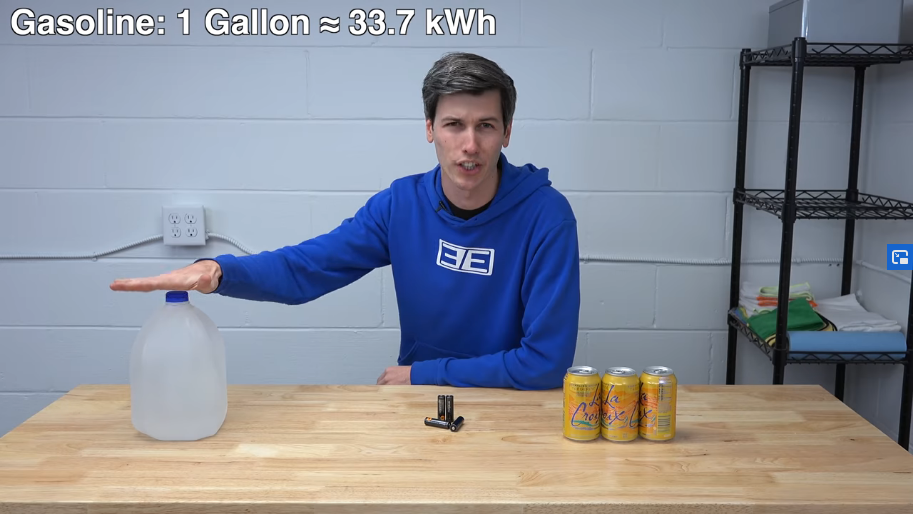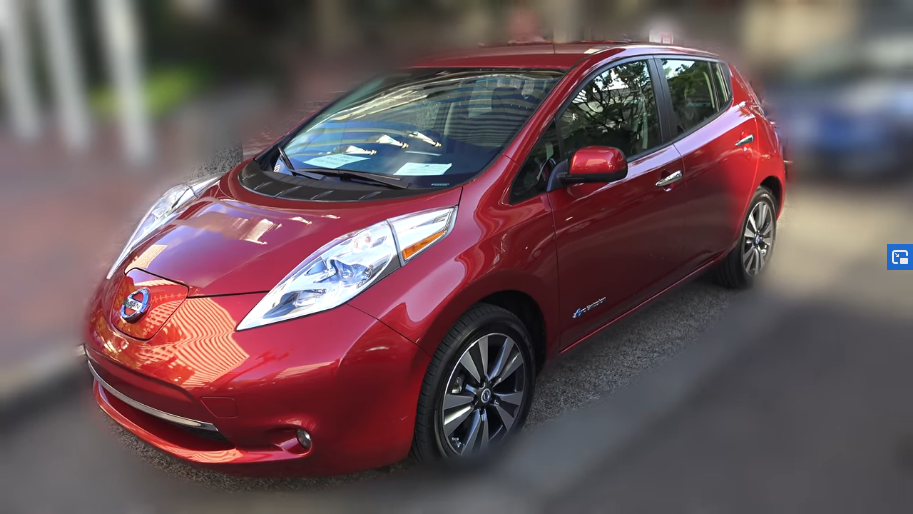Search the Community
Showing results for tags 'ev car'.
-
As requested by @Volvobrick Started even before I got the GLC Coupe. Was already looking at the Tesla for that first bite in EV, BUT a few things were not in order: 1. Infra, 2. Nascent stage and tech on all fronts, 3. Limited models to compare 2 years later, after much shopping and research, with the infra much improved, I went for it. These were the contendors: 1. Tesla Would have settled for it save for it being commonplace like the Rolla and not having a dedicated showroom (now have) put me off. Also, the feel and overall façade of the T3 was a put off. Literally an iPad on wheels 2. Ionic 5 This was also on the radar but there were limited units on the road and somehow, the design and cues just did not fit in. I could see how it had an appealing design, but was quickly taken off the list. Then, I went upmarket and here were the contendors: 3. Taycan Loved it at first sight, test and what was given. It had that oomph and all and was close to making the cut, but then my senses got to me…to pay $600/$700 plus k for that……into the bin. 4. EQC 400 Sure getter for me. Loved the design cues, overall feel, and with the GLC, it had the same feel as I was used to. Almost plonked for a used on, with 14k on the odo, but someone beat me to it. Fate, I guess......... 5. EQE 400 Went down a couple of times to have a look, but unit was not homologated as yet, and no test units avail, and then when the price was revealed, too hefty a tag for me. This would be my go to in future Then, the GLC got grumpy and I had the tyre blowout🤑..bitch…that was a sign. Car was already listed for sale, and had a few offers, but then this particular dealer (deals with EV only) sent me a msg. I did not reply, but 2 weeks later, I did reply and then voila: 6. i4 EV40 There was a unit avail for me to take, but was beaten to it. Not disheartened, I waited and then just after the blowout, dealer called me that he had the Portimac Blue unit and was to come in later. COE went up (105k) and I thought, there goes the price. Lo and behold, price maintained. Did a visit, and he allowed a test, and I placed my deposit on the spot. Car only has 1.4k on odo. Used for mgt to test, I was told Collected the car after my Iceland trip, and there was a poignant note to this, as when I was in Iceland, I truly saw the effects of global warming. Right before my eyes, I saw a breakoff of an iceberg from the Glacier and to me, Global warming is real… so that kinda edged me on. May be a mall part, but still a part, although some may say EV is another MotherEarthFUGGER ahhahaha So to end it all, those going on this journey, these would be your considerations on the EV choice: 1. Price – this is clear. Has to fit the pocket. Savings downstream are massive, but capital costs upfront. Look at BYD, they are promising 2. Charging – study the charging infra around your area. My area has no shortage of charging at all and suits my lifestyle 3. Range anxiety: This WILL be an issue, but will be gone after a week or so. Car can go to low 20% and still have range of 100km. Same as ICE 4. Savings: Somewhat negated by road tax BUT still save abt $3k/annually as monthly charging is around $150 vs Petrol previously $500...ccb PAP That’s all I have to say for now, but as and when I do have any inputs, I will add on. Others, please feel free to chime in. For charging and sites lobang, go here:
- 166 replies
-
- 31
-

-
Switching to an electric car gives you a smoother, emission-free drive. Much has changed since electric cars entered the scene about a decade ago. Back then, the thought of owning - or even driving - an electric car was a remote one, with few electric vehicles (EVs) and charging points available. Spotting one in public was like sighting a unicorn. Today, the EV landscape has totally transformed, with practically every brand producing EVs. They even come in a range of models - from sedans, SUVs, hatchbacks, and more. Alongside this, charging points in Singapore are also more widely accessible. Given the availability of EV charging points across the island, and how EVs give a smoother, emission-free drive, now could be the time to consider switching from a regular internal combustion engine (ICE) car to an EV. Here are the reasons why. Incentives & rebates First things first: When you buy an EV in Singapore, you can avail the incentives launched by the Land Transport Authority (LTA) to electrify our vehicle population as it works towards having 100% cleaner energy vehicles by 2040 under the Singapore Green Plan 2030. This means you can take advantage of the EV Early Adoption Incentive, which grants those who register an electric vehicle a rebate of up to 45% off the Additional Registration Fees (capped at $20,000). You may also be able to qualify for the Enhanced Vehicle Emissions Scheme, which offers rebates of up to $25,000 for cars classified under the A1 Band. Plus, with the Revised Road Tax Framework, the road tax for mass-market EVs has become more comparable to that of their ICE equivalents. In fact, LTA has already revised the Maximum Power Output threshold for EVs from 97kW to 110kW, so that more mass-market EV models now fall under the less expensive COE Category A. In total, these incentives give buyers of new EVs combined savings of up to $45,000 in rebates. Those whose cars are in the 90-230kW power rating bracket will see their annual road tax reduced by up to 34%. Cheaper maintenance So EVs are more affordable compared to when they first hit the market. How about maintaining it? An EV's electric motor is simpler and has fewer components. Apart from improved reliability, this also means the battery, motor and associated electronics require little to no regular maintenance. There are fewer fluids and parts that need to be maintained, changed, or replaced such as engine oil, oil filters, air filter, spark plugs, fuel filters, timing belts and radiators. Regenerative braking - an innovative feature in EVs that helps recharge batteries on the go by transforming kinetic energy from braking back into electric energy stored in the car's batteries - reduces brake wear and the build-up of brake dust. This extends the life of parts such as cables and brake pads. Combining all these savings, the cost of maintaining an EV can be just up to a third of the expense of maintaining an ICE vehicle, thereby lowering your running costs. A smoother drive If you've never driven an EV and you're wondering how driving one will compare to its ICE counterpart, you will be pleasantly surprised. A huge advantage is that the EV's electric motor delivers torque instantly, whereas a petrol-powered engine still needs to increase its revolutions per minute (RPM) to increase its power output. This translates to a seamless and rapid power delivery, which - as we at SGCM can attest to after having test-driven EVs of all makes and models - makes an EV feel sharper and more responsive. Quieter and more comfortable rides Having an electric motor also has near-zero levels of vibration and operating it produces significantly less noise than an ICE car. Apart from improving your comfort level inside the car, you can also enjoy music and have better conversations with your passengers with less distractions due to the absence of engine noise. Better range, less anxiety Range anxiety, or the fear that your car battery may die while you're on the road, is very much a real thing, especially back when charging points used to be far and few between. With many EV models now offering a driving range of at least 350 km though, you have less to worry about. This is more than sufficient to meet the needs of the average motorist in Singapore. Generally speaking, most drivers average 50km a day commuting to and from work, with perhaps an errand or two in between. An EV with around a 350 km range means you should only have to charge it approximately once a week. Recharging can be as simple as plugging it in once a week when you get home, leaving it to get 'juiced up' overnight, and driving off the next day with a fully-charged battery. More charging points coming your way In addition, Singapore's EV charging network is rapidly expanding. As of today, there are already over 3,000 charging points island-wide, with more on the way. In just three years' time, every HDB town will be EV-Ready, with charging points in nearly 2,000 HDB carparks. It won't stop there. As EV adoption increases, LTA will deploy additional charging points to meet the higher EV charging demand. By 2030, Singapore will have 60,000 EV charging points. Easier to find charging points Finding a charging point is not like finding a needle in the haystack anymore. Just use the MyTransport.SG app to find charging points offered by the major providers. Apart from helping you locate charging points, the app also displays information such as pricing, power rating and type of plug to help drivers plan their charging schedule, as well as the real-time availability of EV charging points - starting with those under CDG-E & SP Mobility. After finding your preferred charging point in the app, you will be redirected to the operator's app for payment, or to Google Maps for navigation. Upgraded safety standards EVs come with Battery Management systems that regulates the charge voltage, temperature, and battery health, ensuring that the EV's batteries operate and is charged within its prescribed safety limits. In addition, Singapore's updated EV charging standard, Technical Reference 25 (TR25) stipulates the proper installation of charging points and mandates periodic safety inspections. TR25 is reviewed not just by the Government, but also by industry and academic stakeholders to ensure that Singapore stays relevant in the landscape by incorporating the latest EV charging technologies and supporting the safety of the EV ecosystem in the country. For example, under TR25, the use of household extension cords to charge EVs from 13 Ampere household sockets is banned. Low-powered charging is permitted using 15 Ampere (15A) sockets, with each socket allowed to serve only one charger at a time to avoid electrical overloading. Singapore also adheres to international standards like United Nations Economic Commissions for Europe R100 (UNECE R100) to reduce the risk of electrical, thermal, or mechanical failures. Better for the environment Climate change is a real issue that affects everyone, which means we should all play a part in alleviating it - such as by switching to EVs if we need a car. EVs are significantly more environmentally friendly compared to ICE cars in more ways than one. An EV emits half the amount of carbon dioxide (CO2) than a comparable ICE vehicle. This means that if all cars in Singapore are EVs, carbon emissions would be reduced by an astounding 1.5 to 2 million tonnes. With an average car weighing about 1.5 tonnes, that would make it equivalent to the weight of up to 1.3 million cars! EVs also help curb noise pollution as they produce less noise than ICEs, particularly at low speeds. With the prospect of minimum noise levels to be regulated under new laws in Singapore for technical standards and safety precautions soon, driving an EV, which emits less noise than an ICE vehicle, will put you ahead of the curve. To switch or not to switch If it's inertia that's holding you back from making the switch, consider this the push that you need. EVs are quieter, more environmentally friendly, and deliver smoother performance compared to ICE vehicles. The charging infrastructure has evolved to be more convenient and accessible, with even more improvements in the horizon. So, should you now consider switching to an EV? It is, quite simply, an easier question to answer than ever before and the thought of owning an EV in Singapore is truly a viable option that needs to be seriously considered.
- 1 comment
-
- electric vehicle
- electric car
-
(and 1 more)
Tagged with:
-
Okay, electrification is getting real and sooner or later we might have to switch our car to EV for zero emission. I am not a hardcore car enthusiast compared to some folks here who are reading this, but I do like my current car. And it will be inevitable to part way with her one day. So I chance upon this puny yet mouthful mini EV that can sit 4. The Wuling hongguang mini EV. 🙂 This car only cost like $4,000 USD in china and it ticks all the box for a city driving car. This car only have 18bhp, 85nm of torque. This car can only travel like 170km before you need to send it for a charge. And this, I think it will be a good thing. Because you will get used to the charging more often than those big car. Even thou, I don't think it will come to Singapore, but if it does. I am very open to give this a try if the price is right. 🙂 And my first mod for this car will be debadging it. 🤣
-
With the planned phasing out of combustion engines by 2040, we find out from Cars & Coffee about how an electric car might just work out well today. Thinking of getting an Electric Car (EV) in Singapore? Well, it isn't as hard as you think it is. With the government planning to phase out the sale of new cars with Internal Combustion Engines by 2040 along with added incentives, EV ownership is set to increase in the next few years. But can you make that choice today? We go to Cars & Coffee to find out more with its large lineup of cars, that also includes EVs. 1. They're fast and cool There's something that everyone can enjoy when it comes to EVs: Their ability to provide instantaneous torque. Perhaps the car manufacturer that truly represents this is Tesla. Cars & Coffee has the Model 3 sedan. With 510Nm of torque pushed out from its single electric motor, you can expect pretty rapid acceleration. But elsewhere, the Model 3 is a cool car inside and out. It sports a minimalist interior with a huge 15-inch display to control various infotainment and vehicle features, plus, an all-glass roof. And, most importantly, there's nothing short of cool about being seen in a Tesla today. 2. Small and practical, too But an electric car doesn't have to be a luxurious go-fast option. You can have them in compact, practical packages too. Check out the Honda e available at Cars & Coffee. If a practical roundabout is what you're after, the Honda e is a pretty sweet choice. And it looks cool too. It looks quirky and fun, with proportions just a tad smaller than the quintessential Honda Jazz. It's decked out in features. There's five screens displaying various driving and infotainment information. And in a bid for more efficient aerodynamics, it has cameras instead of wing mirrors - a cool party trick to show your passengers. 3. Servicing is easy As car owners, you're used to the routine of frequent oil changes, spark plugs and the like. Electric vehicles don't have to deal with the greasy, oily affair - they don't have internal combustion engines. The routine maintenance then only generally applies to things such as your brake pads and discs, tyres, and of course topping up your windshield washer fluid. It is cheaper in the long run, and thanks to the lesser maintenance, many EVs offer longer warranty periods. Cars & Coffee for example offers a five year or 130,000km warranty on the Tesla Model 3, whichever comes first. 4. Charging isn't as hard as you think it is We've grown used to seeing our fuel gauge close to empty, popping by a petrol station and filling up. It takes 10 minutes - and lets you drive for a considerable distance before ever needing to fill up again. The age-old idea that EVs take forever to charge is dead. They now charge as fast as your own mobile phone. The Honda e, for example, can charge at one of SP Group's 50kW fast chargers from 20 to 80% in under 30 minutes. And more and more charging stations will be coming up in Singapore. This year's Budget has announced that there will be 28,000 charging ports in Singapore by 2030. Another good reason to go for an EV now are reserved lots! Many malls offer reserved parking lots for electric cars, some even offering free charging! You'll never worry about finding a parking lot again. 5. Better rebates for EVs With government initiatives to encourage car buyers to choose cleaner, more efficient vehicles, EVs will stand to benefit, too. From 1 January 2021, the updated Vehicle Emissions Scheme rebate will be increased by $5,000, meaning a Band A1 vehicle will benefit from a $25,000 rebate. But that's not all when you pick an EV. The Electric Vehicle Early Adoption Incentive offers a rebate of 45% off the Additional Registration Fee for EVs, capped at $20,000. Which means, if you are planning to buy a Band A1 EV from 2021, you can benefit from a rebate of up to $45,000! So, if you have the means to get an electric vehicle today, there are certainly a lot of benefits. With the government planning to phase out the sale of internal combustion engines by 2040, why wait when you can start today? Looking for a new car? Head on down to Cars & Coffee Singapore at these locations. To get in touch, you can contact Cars & Coffee Singapore at 6266 5555.
- 1 comment
-
- electric car
- electric
-
(and 1 more)
Tagged with:
-
Why Gas Engines Are Far From Dead - Biggest EV Problems According to the industry that is selling combustion engine, and the combustion engine is going nowhere. So. . . let's dig into it and find out why is it so. Why would manufacturers continue improving combustion engines? So in the video, it is going to divide into 4 categories. Enviroment, Science, Consumer and Cost. And let's start with science. From the physics standpoint, the biggest challenge inside an electric car is energy density... How much energy can you put into a certain space... So it illustrated that a gallon ( 4.5L) of petrol can generate 33.7kWh. And to make his point clearer, Jason pointed out that just one gallon of petrol has even more energy density in a 1st Gen Nissan leaf! And Jason found 8 lithium-ion battery manufacturer and check out who has the best energy density of a battery cell. And the densest he found is 684wh/ In the video, he wanna know how much space do we need to contain the same amount of energy density produced by petrol and compare with lithium-ion batteries. Arranging the can to match with one gallon of petrol. . . And it takes 194 cans of soft drinks to make it equivalent to one gallon of petrol. And by volume, it is 13 times more energy-dense than the lithium-ion batteries. So moving to the weight factor, it gives the petrol engine more advantages. 1 Gallon (5.4L) of petrol weights 6lbs ( 2.72kg) = 33.7kWh Petrol energy density = 12,400wh/kg Li-Ion energy density = 240wh/kg This is an astonishing 50 times. One thing Jason point out that the reason why it doesn't make sense to make an electric plane powered by a li-Ion battery. You can pack all the battery to make the plane fly and don't travel long enough, yet you cannot carry any passenger with all the weight pack inside the battery. Following is cost. According to SAE, the initial purchase price of an electric car is $12,000 USD more than the petrol car. Then it comes to profit to a manufacturer. An electric car in order to get profitable, it needs to cost $48,000USD. So most of the manufacturer would produce what makes them profitable. Next is the environment. There is a study shown that the is going to be roughly 2 billion more internal combustion engine to be produced between now and 2045. And let's take a look at the manufacturer point of view. Let's say you are Mazda who is a small car manufacturer compare to players like VW and BMW. They do not have a lot of money and so they have to spend wisely in their research and development budget. So instead of producing EV car and the total sales is only going at 10%, making it 5% environment-friendly. The company can decide to spend all their money to make all their combustion engine car more energy-saving and better emission standard for environment-friendly. So in this hypothetical scenario, it is actually more profitable and cleaner to make a combustion engine. Finally, it is consumers. A large part of selling a car is knowing the market if they were to purchase one. 2018-2019 the global electric car market share is about 2%. . . . Okay you should watch the video for a clearer explanation. haha.
- 4 replies
-
- 8
-

-
- engineering explained
- gas engine
-
(and 2 more)
Tagged with:
-
Every car needs an "insane" mode
- 21 replies
-
- tesla
- tesla p85d
-
(and 4 more)
Tagged with:



.png)







